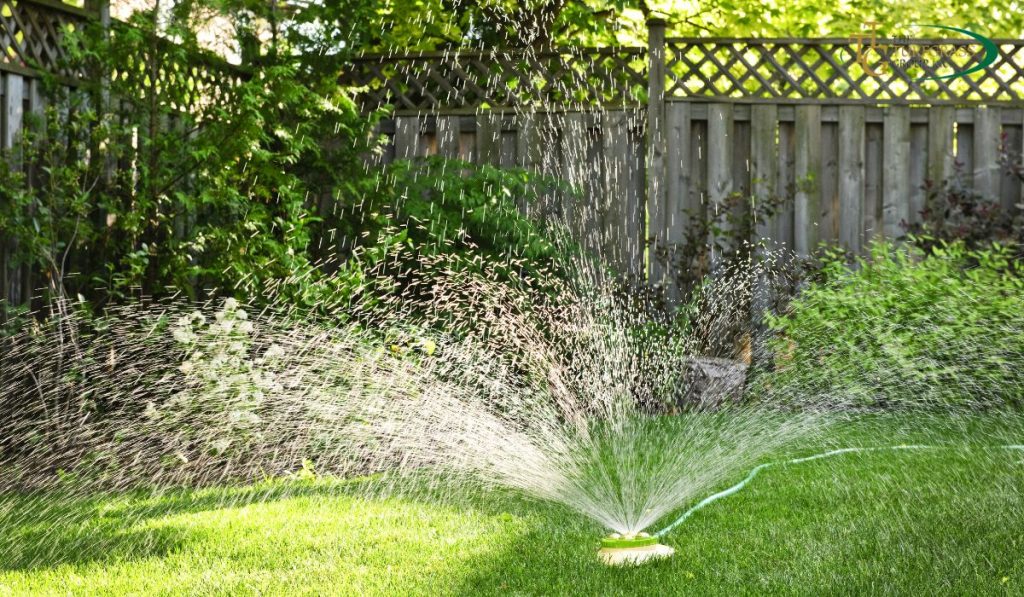
When it comes to maintaining a lush and healthy lawn, proper watering is essential.
While it may seem like a straight forward task, there’s actually a science behind watering mature turf effectively.
Understanding the needs of your grass and employing the right techniques can make a significant difference in the appearance and health of your lawn.
In this blog, we’ll delve into the science of deep watering for mature turf.
The Importance of Proper Watering
Before we dive into the specifics of deep watering, let’s briefly discuss why watering your lawn correctly is so crucial.
Grass, like all plants, requires water for photosynthesis, nutrient uptake, and cell structure.
It also helps regulate temperature and serves as a transport medium for essential nutrients.
Improper watering can lead to a host of problems, including:
Shallow Roots: Frequent, shallow watering encourages grass to develop shallow roots.
This makes the lawn more susceptible to drought stress and other environmental challenges.
Disease and Pest Issues: Overwatering can create excessively moist conditions that promote the growth of fungi and attract pests.
Waste of Resources: Overwatering not only wastes water but also your time and money on unnecessary water bills.
The Science Behind Deep Watering

Deep watering, as the name suggests, involves delivering water to the root zone of your grass, allowing the roots to grow deeper into the soil.
Here’s how it works:
Root Development: When you water deeply, the moisture penetrates the soil and encourages the roots to reach down in search of water.
This results in a healthier and more drought-resistant lawn.
Soil Aeration: Deep watering helps prevent soil compaction by allowing air to reach the root zone.
Compacted soil restricts root growth and water infiltration.
Even Moisture Distribution: Deep watering ensures that water is evenly distributed throughout the root zone, preventing dry spots and promoting uniform growth.
Tips for Deep Watering
To implement deep watering effectively, follow these tips:
Frequency: Water your lawn deeply but less frequently.
Aim for 1 to 1.5 inches of water per week, including rainfall.
It’s better to water deeply once or twice a week rather than shallow, frequent watering.
Water Early: Water your lawn early in the morning to minimize evaporation and allow the grass to dry before evening, reducing the risk of fungal diseases.
Use a Soaker Hose or Irrigation System: These tools help ensure even water distribution and prevent runoff.
Monitor Soil Moisture: Invest in a moisture meter to gauge the moisture level of your soil accurately.
Water when the soil is dry 3-4 inches below the surface.
Adjust for Weather: Be mindful of weather conditions.
During hot and dry spells, your lawn may need more water, while cooler and wetter periods may require less.
Conclusion
In conclusion, deep watering is a science-backed approach to keeping mature turf healthy and vibrant.
By understanding the needs of your grass and implementing proper watering techniques, you can maintain a lush lawn that not only looks beautiful but is also resilient to various environmental stressors.
Remember, a well-watered lawn is a key to a happy and healthy outdoor space.
FAQs
How often should I water my mature turf?
The frequency of watering mature turf depends on factors such as climate, soil type, and grass species. Generally, it’s recommended to water deeply once or twice a week, providing about 1 to 1.5 inches of water per week, including rainfall.

What is the best time to water my lawn?
The ideal time to water your lawn is early in the morning, typically between 6 AM and 10 AM. This minimizes water loss due to evaporation and allows the grass to dry before nighttime, reducing the risk of fungal diseases.
How do I know if my lawn needs water?
You can use a moisture meter to check the soil’s moisture level. Alternatively, observe your grass; if it starts to show signs of drought stress, such as wilting or a bluish-gray tint, it’s time to water.
Is it better to water deeply or shallowly?
Deep watering is generally better for mature turf. It encourages deeper root growth, which makes your lawn more resilient to drought and other stressors. Shallow watering can lead to shallow root systems.
Can I overwater my lawn?
Yes, overwatering can be detrimental to your lawn. It can lead to shallow root development, increased susceptibility to disease, and wasted resources. It’s essential to strike a balance between providing enough moisture and avoiding excess.
What is the best method for deep watering?
Soaker hoses or irrigation systems are excellent tools for deep watering. They ensure even water distribution and prevent runoff. Drip irrigation is another efficient option.
Should I water my lawn during a rainy season?
During rainy periods, you may not need to water your lawn as frequently. Monitor the soil moisture and adjust your watering schedule accordingly. Be mindful not to overwater during wet spells.
What is the proper technique for using a moisture meter?
Insert the moisture meter probe into the soil at various locations in your lawn, preferably at least 3-4 inches deep. Take readings and water when the soil moisture level indicates dryness in the root zone.
Can I water my lawn in the evening or at night?
Watering in the evening or at night can increase the risk of fungal diseases due to prolonged moisture on the grass blades. It’s best to stick to early morning watering.
Are there any grass species that require different watering practices?
Some grass species have specific water requirements. Warm-season grasses like Bermuda and Zoysia may tolerate drought better than cool-season grasses like Kentucky Bluegrass. It’s essential to tailor your watering routine to your specific grass type for optimal results.